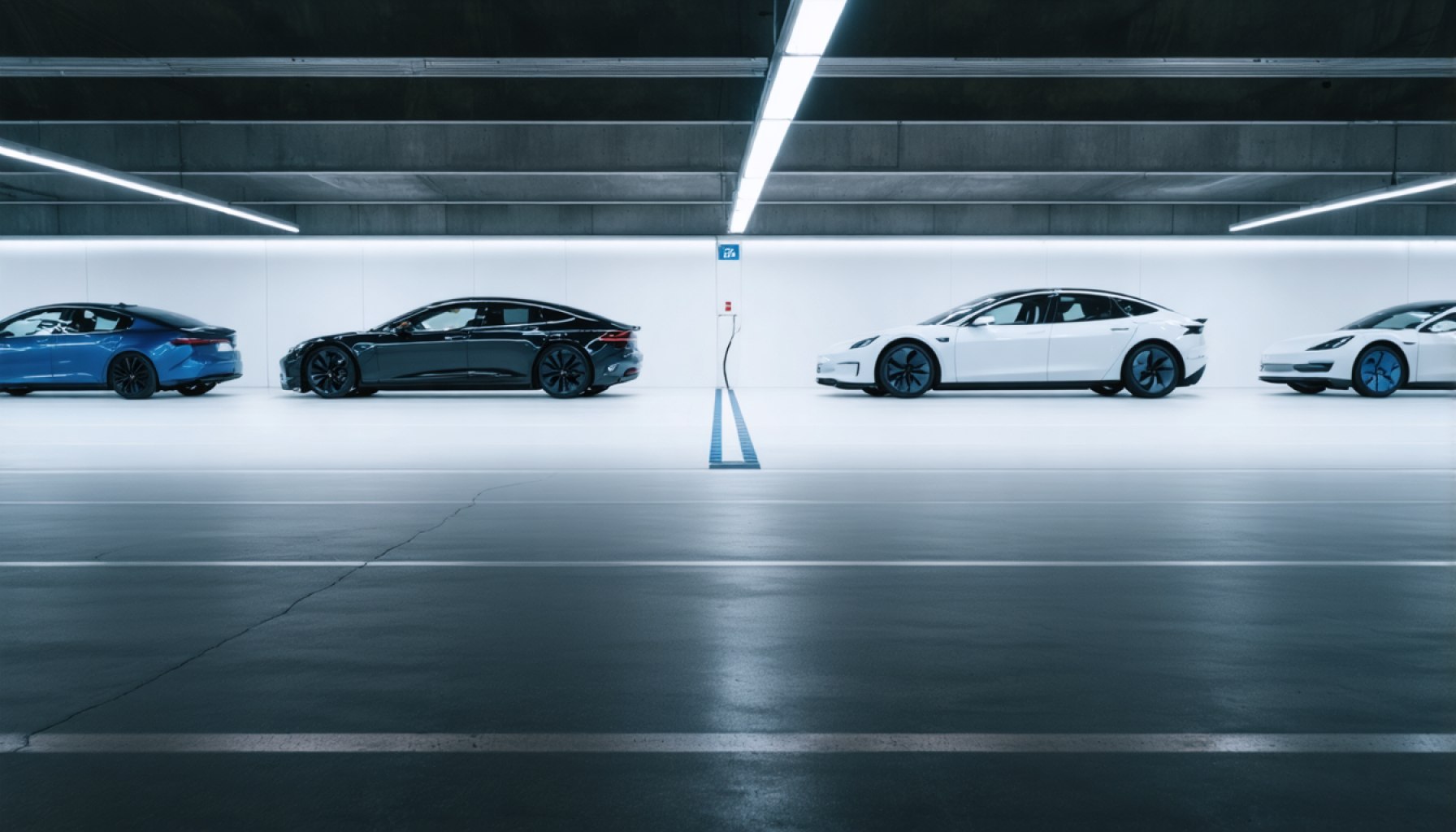- Electric vehicles (EVs) in Europe are witnessing a resurgence, with sales increasing by 28% in the first quarter, driven by strong recoveries in markets like Germany.
- Volkswagen and BMW have reported substantial sales growth, while Renault’s global EV sales have soared by 88%.
- Competitive pricing and new models have made electric vehicles more accessible, reducing the dependency on government subsidies, though policy changes in France have slightly curbed growth.
- Europe’s decision to ease emission regulations for traditional vehicles presents challenges in battery electric vehicle (BEV) adoption.
- Industry leaders emphasize the need for clear regulatory policies to maintain consumer confidence and support the transition to electric mobility.
- The future of EVs in Europe depends on ongoing innovation, investment, and stable socio-political frameworks to uphold environmental goals.
Amid a backdrop of geopolitical tension and economic uncertainty, a silent revolution is charging through Europe’s streets, powered by electric vehicles. In stark contrast to looming clouds over the automotive industry, EV sales have surged back, bringing a spark of hope to carmakers who face challenges due to shifting international policies and shrinking profit margins.
Across wider Europe and the UK, registrations of new electric cars swelled by an impressive 28% in the first quarter of the year, fueled by a robust recovery in Germany. Volkswagen saw its sales double, with every fifth car sold in Western Europe now being fully electric. BMW, not to be left behind, reported a staggering 64% leap in its EV sales for the same period, while Renault experienced a remarkable 88% growth globally. Remarkably, this resurgence unfolded even as some key players like Tesla faced declines, possibly linked to consumer reactions against the charged political atmosphere surrounding its leadership.
New models and competitive pricing strategies have been pivotal in catalyzing this surge. Affordable electric options from Renault and Citroën, priced under €25,000, have made the electric dream reachable for the masses and lessened reliance on government subsidies. Even so, the withdrawal of subsidies in France has slightly dampened the momentum, illustrating the vacillating nature of policy impact on consumer behavior.
Yet, the road is not entirely smooth. Europe’s recent decision to soften emission regulations for combustion engine vehicles threatens to slow the rapid rollout of battery electric vehicles (BEVs). While companies like Volkswagen endeavor to counteract potential profit turnovers by introducing cost-efficient models like the upcoming ID2, there is still a ride ahead to achieve better margins and broader acceptance.
Amidst it all, industry voices are calling for clarity. Without steady regulatory guidelines, consumer confidence may waver, and the shift to electric could falter. To navigate these uncertain waters, sustained investment and consumer trust are essential. The future of EVs in Europe hinges not just on innovation and market adaptation, but also on the socio-political landscape’s ability to provide a stable framework for progress.
In this era where environmental consciousness increasingly guides consumer choices, Europe finds itself at a crossroads. It must boldly push forward, despite global tremors, to solidify its lead in electric mobility and ensure the green future receives the power it needs to stay on track.
The Future of Electric Vehicles in Europe: Navigating Challenges and Opportunities
Market Forecasts & Industry Trends
The electric vehicle (EV) market in Europe is at a pivotal juncture, showing promising growth amidst several challenges. EV registrations surged by 28% in the first quarter of the year, with significant contributions from Germany. Volkswagen leads the charge with its substantial sales increase, supported by strategic model introductions.
Key Factors Driving the Surge
1. Affordable Options: Automakers like Renault and Citroën have launched models under €25,000, broadening access to EVs.
2. Innovation and Adaptation: Companies are pivoting quickly to introduce new models and technologies, adapting to consumer demands and regulatory requirements.
Challenges and Limitations
1. Policy Ambiguity: Fluctuating government policies, such as changing emission regulations and subsidies, create an unpredictable market environment.
2. Profit Margins: As companies invest heavily in EVs, maintaining strong profit margins remains a challenge, especially with competitive pricing.
How to Navigate the EV Revolution
– Stay Informed: Consumers and investors should keep abreast of policy changes and technological advancements.
– Embrace Incentives: While subsidies may fluctuate, taking advantage of them can significantly reduce the overall cost of EV ownership.
Real-World Use Cases
– Urban Areas: EVs are increasingly favored in cities due to zero-emission zones and incentives, making them ideal for daily commutes.
– Long-Distance Travel: With improvements in range and charging infrastructure, EVs are becoming viable for longer journeys.
Insights & Predictions
– Long-term Growth: Despite short-term policy shifts, the overall trend towards electrification in Europe is expected to continue, driven by consumer demand and environmental policies.
– Technological Advancements: As battery technology evolves, we can expect EVs to become even more efficient and affordable, further accelerating adoption.
Security & Sustainability
– Sustainability Efforts: EVs contribute significantly to reducing emissions and are a key component of achieving sustainability goals in Europe.
– Safety: Modern EVs come equipped with advanced safety features, making them as secure, if not more so, than traditional vehicles.
Actionable Recommendations
1. Invest in Infrastructure: Governments and companies should prioritize expanding charging networks to support the growing number of EVs.
2. Consumer Education: Educating consumers on the benefits of EVs and available incentives can drive adoption even further.
For more information on how to be part of the electric vehicle transformation, visit Volkswagen and BMW.
By understanding these dynamics, stakeholders can effectively contribute to and benefit from the ongoing EV revolution in Europe.
